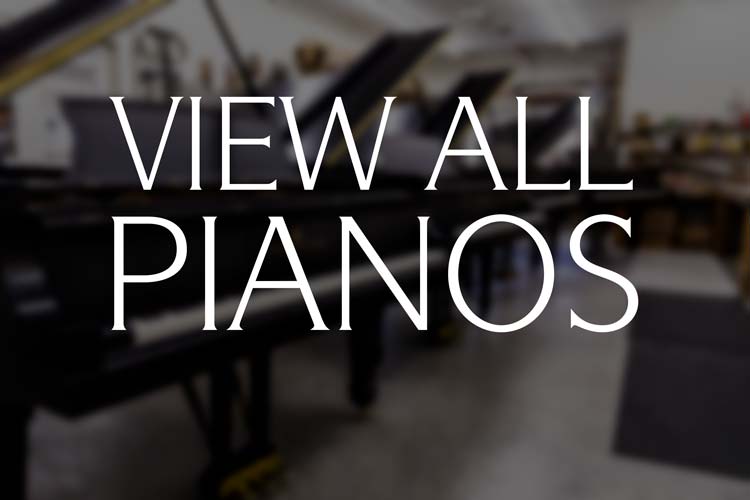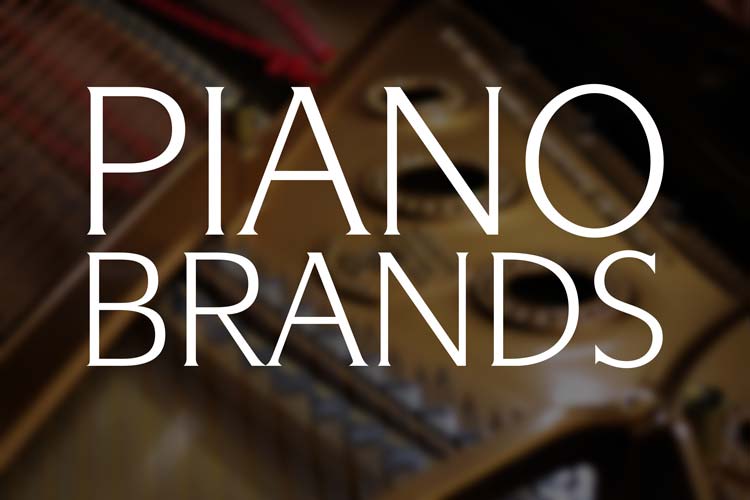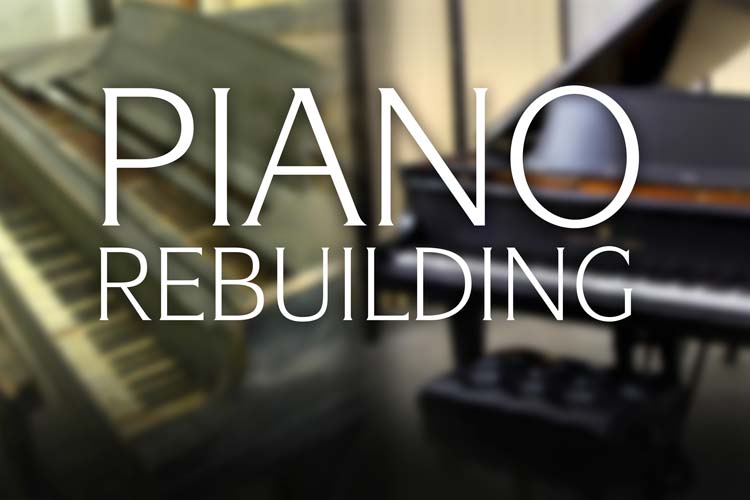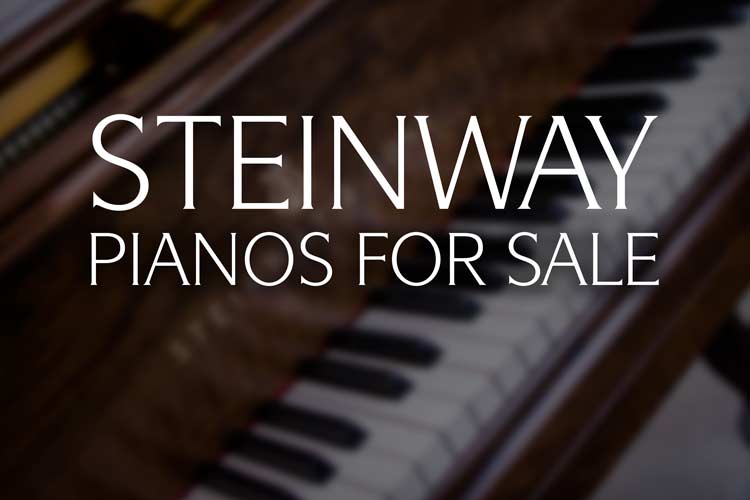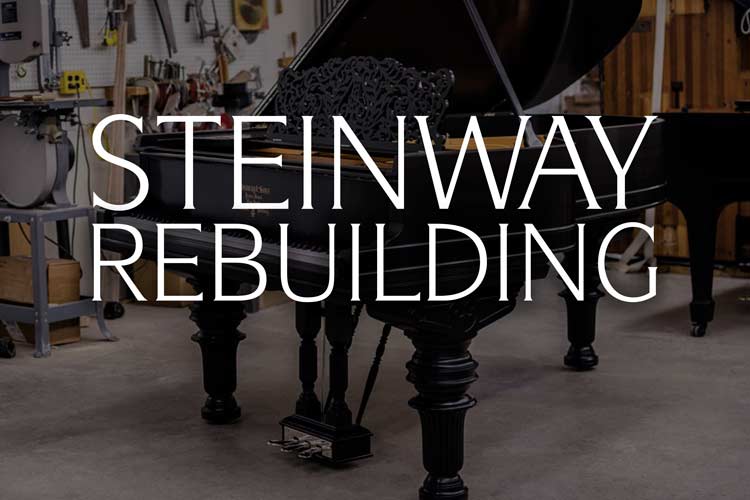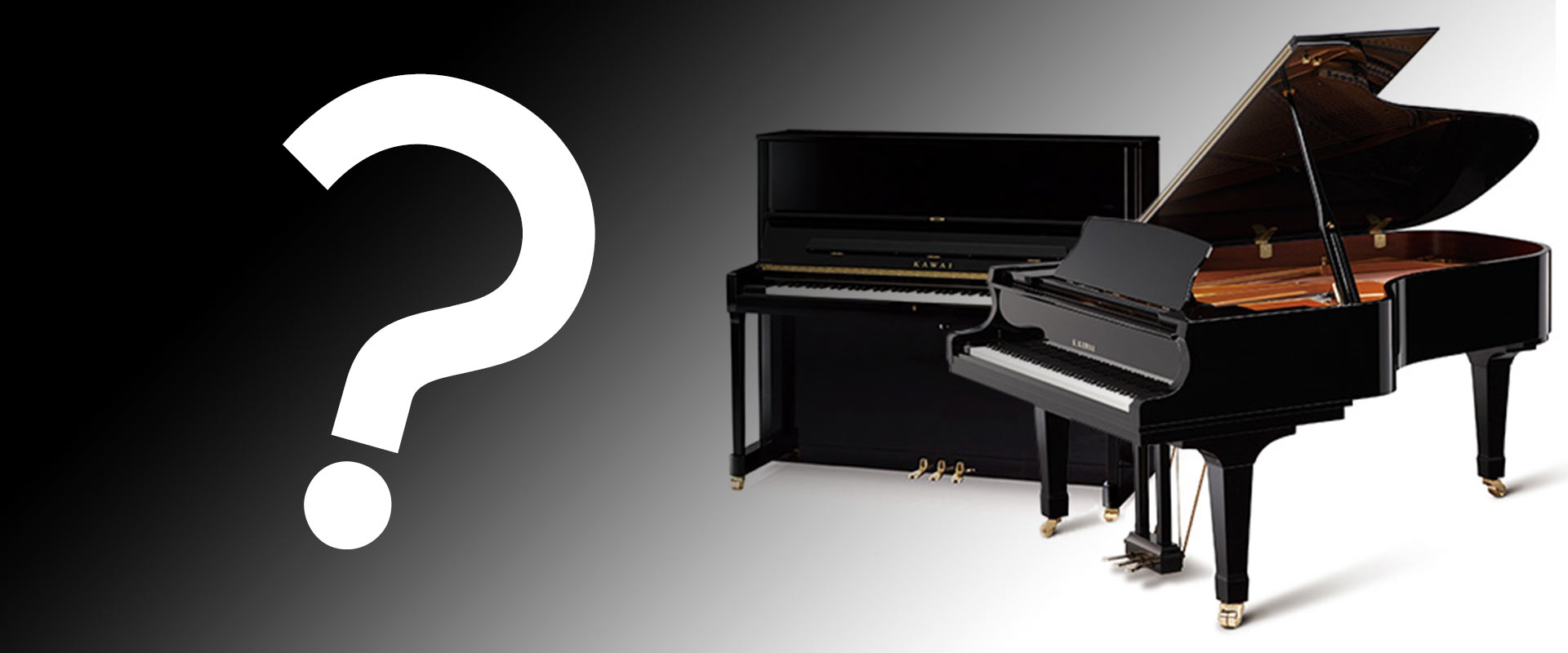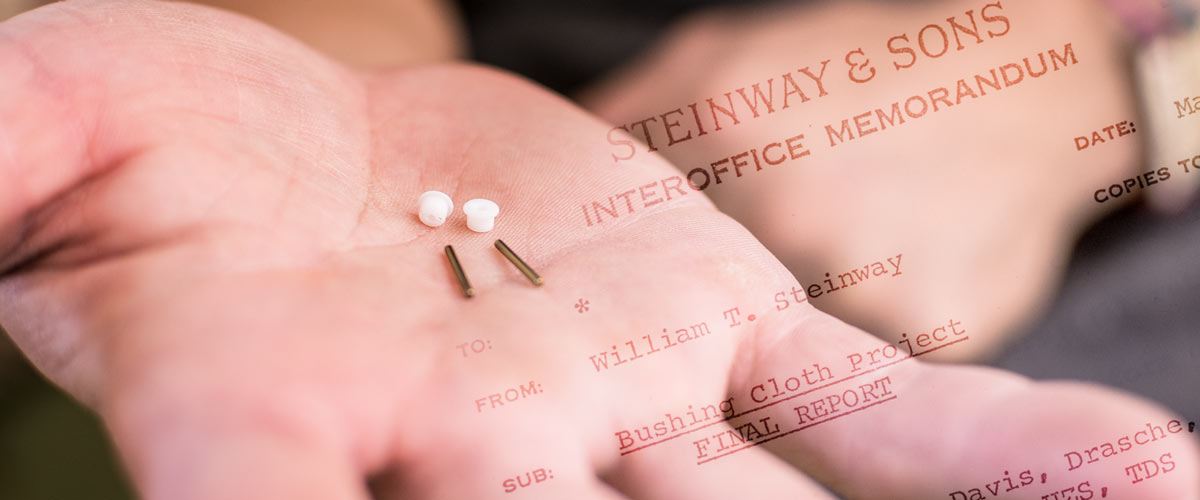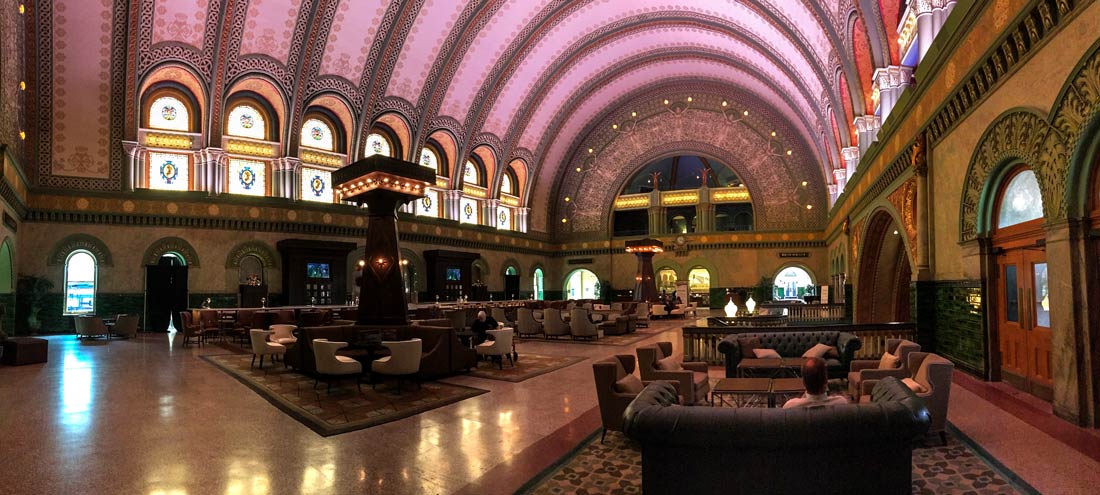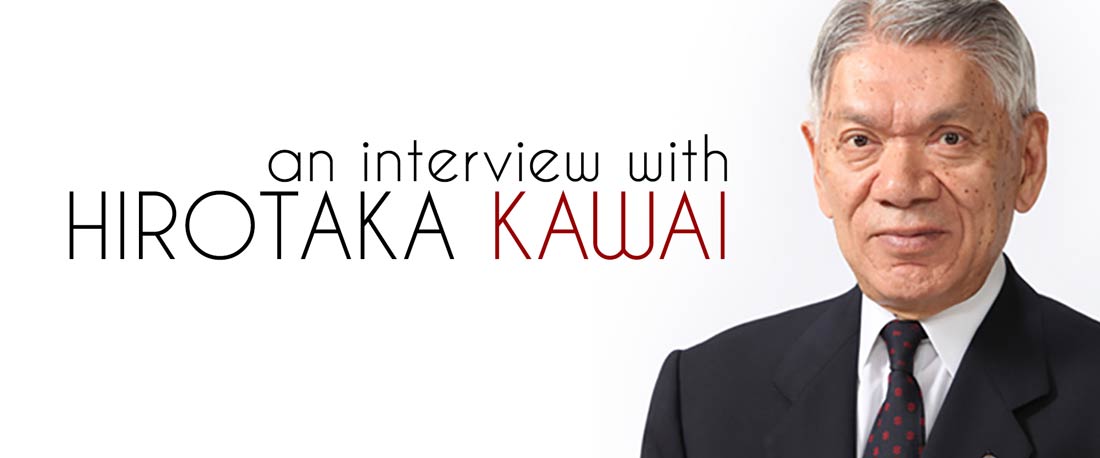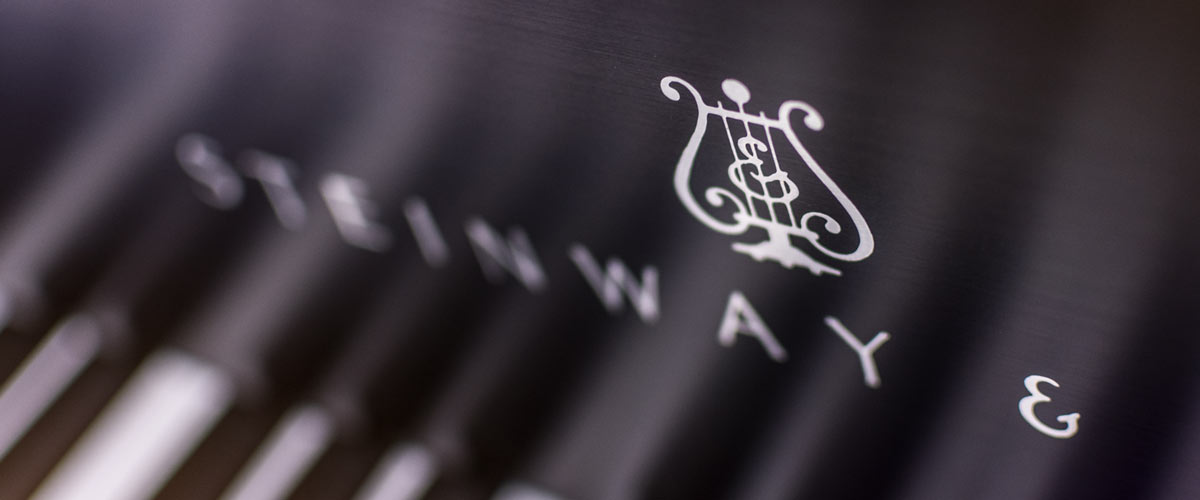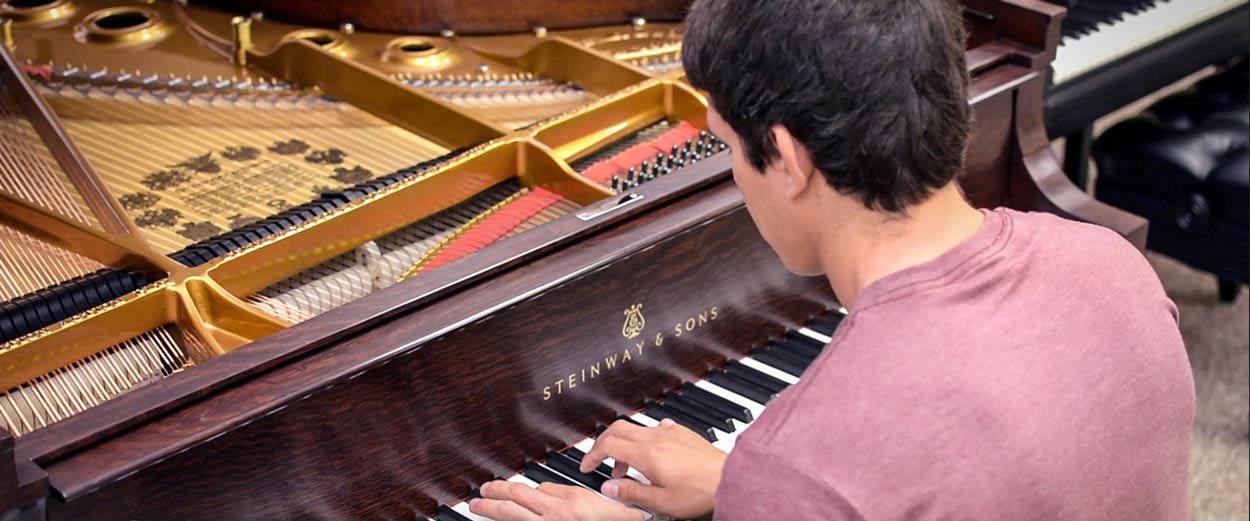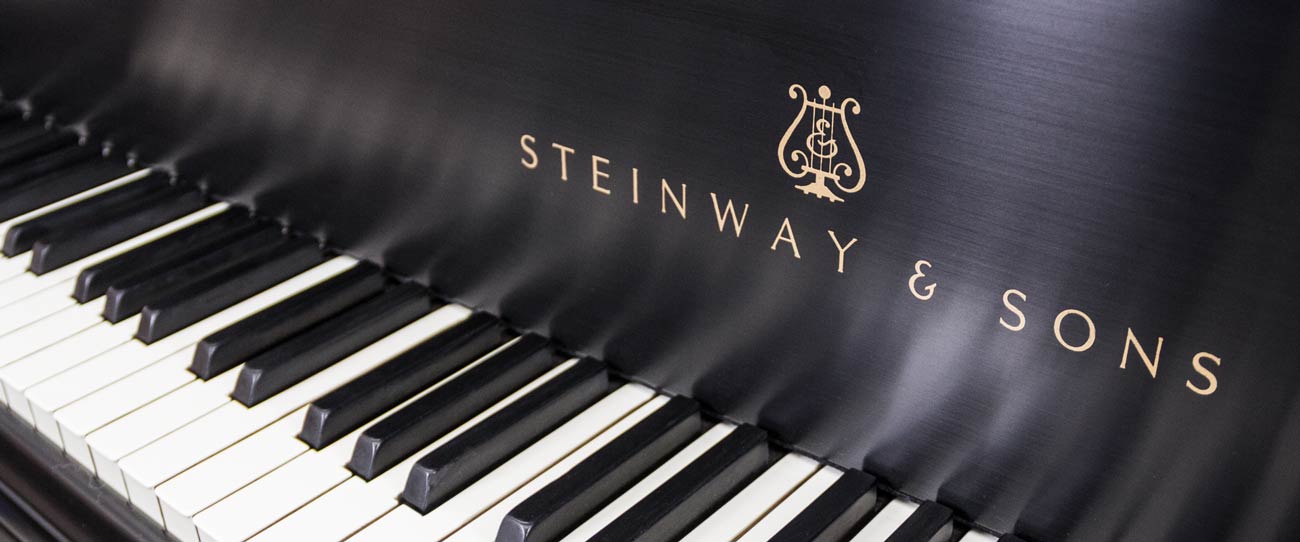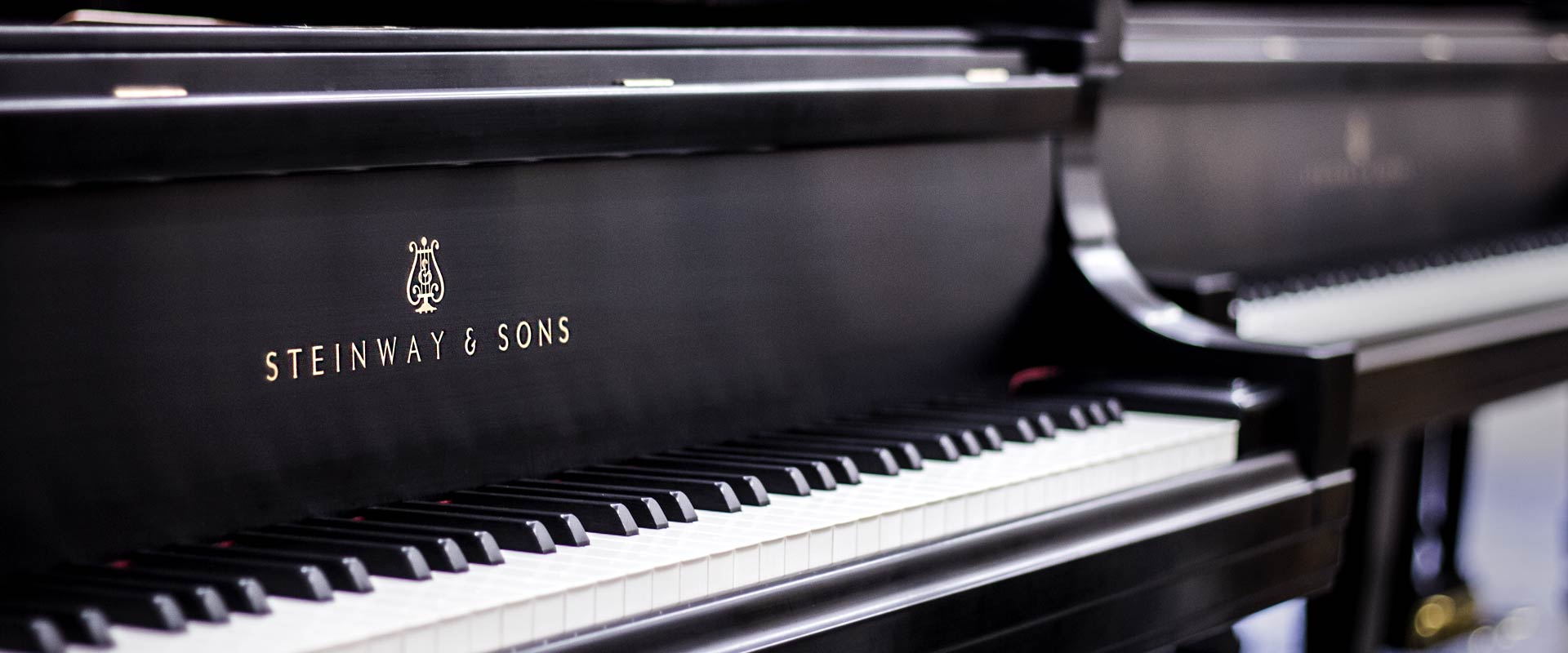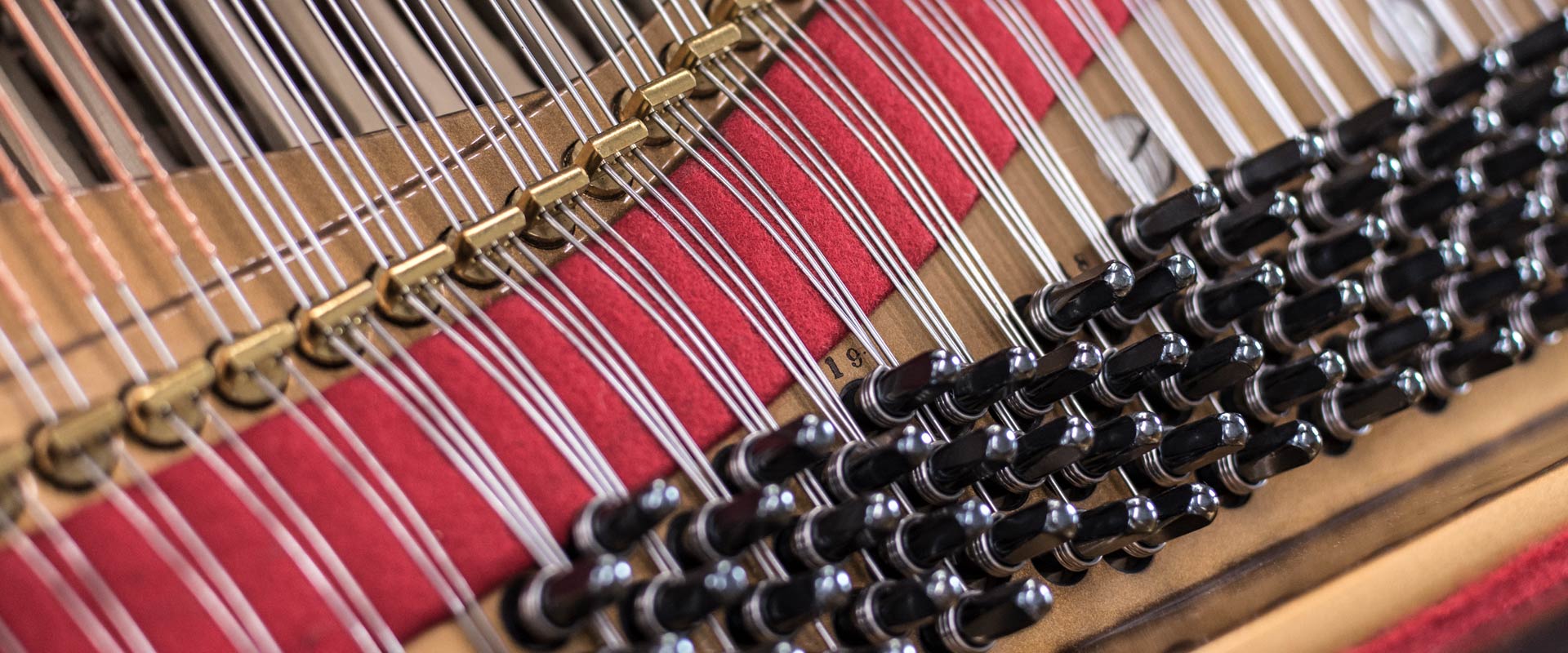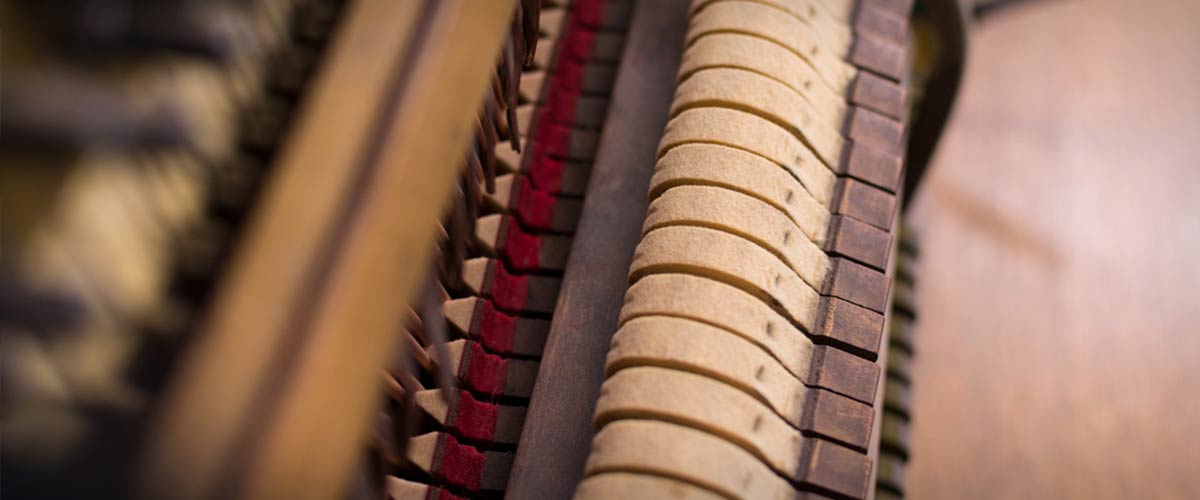VIDEO: “I’m Not That Girl” from Wicked on Steinway M #227953
"Wicked" Piano Cover on Steinway M #227953
Piano Technician/Pianist Philip Balke performs 'I'm Not That Girl' from the beloved Broadway musical, 'Wicked'. Written by Stephen Schwartz, originally recorded by Idina Menzel (original song) and Kristin Chenoweth (reprise). Performed on restored Steinway & Sons Model M Grand Piano #227953. Recorded at the Chupp's Piano Showroom in Goshen, Indiana, video production by Benjamin Rogers.A Deal, or a ‘Steal’? – Choosing an Upright or Grand Piano for your Student
Question: My child is starting piano lessons. What kind of piano should I get for them? I found a free one on Craigslist and most of the keys still work. Could I start them on this piano until they get good enough to deserve a better one?
The selection of an instrument for your budding student is an important one. Students of the piano will spend many an hour practicing scales and building up to ever increasingly difficult pieces. A link should build between the artist and their instrument. This is why it is critical to select a piano that encourages them to sit down and play.
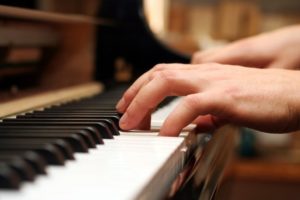 Holding Your Student Back…
Holding Your Student Back…
Imagine someone beginning to learn a sport, say, baseball. One wouldn’t give the budding player a stick broken off from a nearby tree and tell them; ‘learn with this, and when you get really good we’ll give you a real bat!’ It is obvious that this would not be conducive to enjoyable learning and would impede progress. One would be tempted to simply quit when placed under this handicap.
Unfortunately, we see this far too often in the world of pianos. The difference between a fully functional, professional grade piano and the ‘Craigslist deals’ and cheap keyboards one often sees in us for practice is like day and night. Even budding pianists can tell the difference, even if they cannot express what exactly they are feeling.
Creating Frustration
Young students are much more perceptive to tonal quality and touch than many parents think. Many of the ‘free deals’ that can be found on Craigslist (and yes, even at some piano dealers) can be much more trouble than they are worth. A badly built and maintained piano may require much more repair and restoration work than is initially noticeable when examining the exterior. It is always recommended that you contact a qualified piano technician prior to considering the purchase of one of these used pianos. It can be incredibly frustrating to sit down at a barely functioning piano that has been badly maintained and attempt to bring some kind of discernable melody out of it. It is maddening for the professional; just imagine how frustrating it is for a beginning student. Sadly, we see this so often. It is no wonder that many students fail to stick with piano lessons. In terms of monetary value, a durable, high-performance instrument can and will help you and your student get the very most out of piano/music lessons. A well-built, properly maintained instrument will stay in regulation and in tune saving you money in service calls. Many music teachers also have minimum requirements for the student’s practice instrument – and with good reason!Teflon Bushings – The Steinway & Sons “Teflon Era”
Teflon Bushings in Steinway Pianos– The Failed Experiment
If there was one quality that marked the early days of Steinway & Sons, it was the family company’s inherent desire to invent, tweak and improve the quality of their pianos. This led to famous innovations and improvements to grand piano design that continues to be standard a century later. Almost all of the company’s patents were filed during these first years. The study of the lineage of the modern grand piano is a fascinating one, filled with stories of both success and failure. The 'Teflon Era' will forever remain an infamous time for Steinway & Sons, but one that forced the industry to adapt around new ideas and parts.
Increased Competition – Attempted Innovation
During the early 1960s, work began on another project that company leadership hoped would again boost the company’s reputation as a world leading instrument. Continued pressure from less expensive yet high-quality pianos from Japanese makers like Yamaha and Kawai began to push Steinway from their position as the North American piano king. (This battle between the ‘east and the west’ wages on even today. ) A number of their major American competitors were either long gone or in decline. A document provided to Chupp's Piano Service proves interesting. In a letter dated April 6th, 1979 to the late Ed Hendricks, a former Vice President of Marketing and owner of Hendricks’ Pianos in Chicago,....
Famous Musicians & Their Preferred Pianos – Infographic
Over the years, countless musicians have made the piano their primary musical instrument. Companies have fought tooth and nail to win the hearts (and wallets) of artists around the world. Today's big players in the concert market include Steinway & Sons, Kawai, Yamaha and Fazioli continues to make inroads. Over the years, there have been many other companies who have made fine concert instruments that continue to be cherished by pianists. Click to view an infographic highlighting just a few of the artists who continue to make the piano come alive and learn what pianos they prefer to use on the concert stage.
Meet Me In St. Louis – Chupp’s Pianos at the 60th Annual PTG Convention – 2017
Chupp's Pianos Exhibits at the 60th Annual PTG Convention & Technical Institute
If you were staying at the St. Louis Union Station Hotel this past week, you may have seen a few pianos around. The 60th Annual PTG Convention & Technical Institute was held in St. Louis and Chupp's Piano Service served as one of the 'Key Sponsors' and manned a booth in the exhibit hall. Dennis, Tim and Ben alternated between manning the booth and classes, while Philip attended a number of classes over the course of the convention.
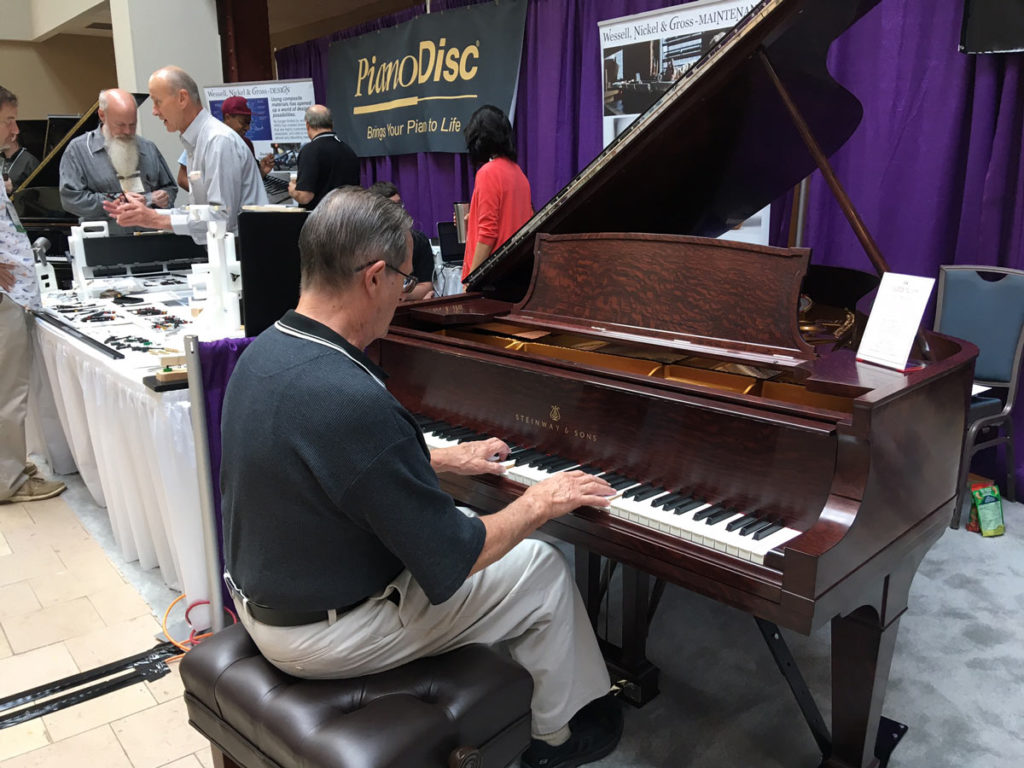 The piano we exhibited was Steinway Model A-3 Grand Piano #188826. Built in 1918, this nearly 100-year-old piano is quite rare due to its quarter sawn oak cabinet. This wood was used very rarely on Steinway pianos and very few of them were ever built. (More info on this piano can be found here.) Piano makers represented included Yamaha, Bosendorfer, Kawai, Mason & Hamlin, Schimmel, Pearl River, Hailun and Blutner. (New Steinway & Sons was not present in the hall.)
The piano we exhibited was Steinway Model A-3 Grand Piano #188826. Built in 1918, this nearly 100-year-old piano is quite rare due to its quarter sawn oak cabinet. This wood was used very rarely on Steinway pianos and very few of them were ever built. (More info on this piano can be found here.) Piano makers represented included Yamaha, Bosendorfer, Kawai, Mason & Hamlin, Schimmel, Pearl River, Hailun and Blutner. (New Steinway & Sons was not present in the hall.)
In The News: From The Top, An Interview With Hirotaka Kawai
Music Inc. Magazine Interview With The President of Kawai
Kawai Musical Instruments president Hirotaka Kawai sat down with Frank Alyker of Music Inc. Magazine to discuss Kawai's 90th anniversary and the growth and philosophy of the Kawai company. Founded by Koichi Kawai in 1927, Kawai has grown to become one of the leading piano makers in the world. Over the years they have also manufactured organs, synthesizers, and guitars. Through all of this, however, they have remained focused on their primary goal - the perfection of the piano. Chupp's Piano Service is proud to be the authorized Kawai dealer for the Michiana region.
The Value of a Restored, Vintage Piano Goes Beyond the Price
The Sounds of History
A fully restored, vintage Steinway & Sons, Mason & Hamlin or other fine make of grand piano offers a great value. Although the lower price tag, when compared to a brand new, one is a component of that, this value goes far deeper. During the height of the piano industry, craftsmanship in North American piano factories was at its peak. Hundreds of companies, thousands of pianos and countless man hours resulted in the refinement of the piano as a musical instrument. As the premier entertainment and luxury item available at that time, everyone just had to own a piano! Advancements in plate design, action geometry, rim pressing and more changes piled on top of each other. Out of the intensity of the 'golden age' of piano making came some of the finest instruments ever built.Video: Restored Art Case Steinway Grand Pianos – Oak, Rosewood & More
Vintage Art Case Grand Pianos - Video Demos
The piano has long been a striking combination between its function as a musical instrument and as a piece of visual art. This was especially true during the early 'golden era' of the piano manufacturing industry. Steinway & Sons was among the many companies battling for supremacy during these competitive years. Experienced craftsmen combined with easy access to the finest woods and other materials resulted in some of the finest playing - and looking pianos ever crafted. Although today's new Steinways are rarely seen outside of their 'traditional' more modern design, expert restoration work allows musicians and appreciators of fine art the chance to experience the characteristics that have made vintage art case pianos so treasured. Below are several videos we have produced highlighting the work of the craftsmen and technicians here at Chupp's Piano Service, Inc.Steinway & Sons Model A-3 Grand Piano #188826 - Quarter Sawn Oak, Sketch 380 Cabinet.
Covered in a beautiful Quarter Sawn Oak veneer, this rare Steinway was built in 1917. Fully rebuilt by us this piano features a new solid spruce soundboard, new hard rock maple pinblock, a fully rebuilt action and much more. Quarter Sawn Oak was rarely utilized on Steinway grand pianos. This instrument is currently featured at our Goshen, IN. Piano Showroom alongside a number of other 'Crown Jewel' style grand pianos.Steinway Model S vs. Model M Pianos
Steinway Model S vs. Model M Pianos
At Chupp’s Pianos, it’s our goal to help you find the piano that fits your wants in terms of tonality and resonance. We’re proud to offer a wide variety of pianos of all types, from Steinway restored pianos to pre-owned Yamaha pianos. A piano can be quite an investment so we want you to be equipped with all the information necessary for you to make an educated decision on which one is the best for you. That’s why we’ll always be here to help you make the right choice. For your convenience, we’d like to give you a quick rundown of two of our more popular pianos, the Steinway Model S and the Steinway Model M. Both are small grand pianos and are the smallest of the company's 'baby' grand pianos. Because of their manageable size, these have become the preferred Steinway models for a number of smaller venues and personal piano owners.Steinway Model S
At 5’1” (155 cm), the Steinway Model S is the smallest of the Steinway grands. This design was introduced in the 1930s with the goal of inviting the majesty of the Steinway sound into just about any area, no matter how small. The smaller size and lower cost of this piano are considered to be the Steinway company's savior during the financial hardships of the Great Depression. It's main advantage is its small size. This model is perfect for those who want the grand feel of a Steinway piano, but don’t have the room in their house for a larger instrument. While the sound is excellent for a model of its small stature, it doesn’t quite match the tonal quality of longer pianos. Although theKawai Vs. Yamaha Pianos
Which Piano is Right for You: Yamaha Vs. Kawai?
Question: “I am considering both Yamaha and Kawai pianos and they seem similar. What are some of the differences?"
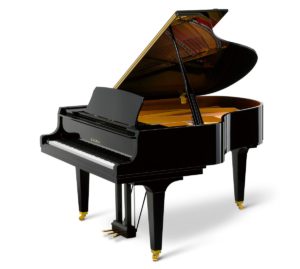 Yamaha pianos are often near the top of the list when pianists begin looking for a good piano. If you are looking at the purchase of a new Yamaha piano, the consideration of a piano manufactured by Kawai may be in your best interest. Founded in 1927 by Koichi Kawai, Kawai endured ninety years of history to become one of the leading piano makers in the world. They continue to produce high-quality pianos at a price point that is hard to beat—even for Yamaha.
Kawai and Yamaha pianos are often compared due to a number of similarities. They are both based in Japan and have decades of experience in the crafting of both upright and grand pianos. Their factories are some of the most advanced in the world and they pride themselves on consistency. Both of the companies build an incredibly high number of pianos each year. This high production capacity combined with truly good quality has made both brands the choice of musicians, students and piano lovers around the globe. That being said, Kawai has some significant advantages over Yamaha pianos, which has allowed them to be the leader of innovation in the piano industry while maintaining competitive pricing for their high-quality pianos. So what separates Kawai pianos from Yamaha pianos?
Yamaha pianos are often near the top of the list when pianists begin looking for a good piano. If you are looking at the purchase of a new Yamaha piano, the consideration of a piano manufactured by Kawai may be in your best interest. Founded in 1927 by Koichi Kawai, Kawai endured ninety years of history to become one of the leading piano makers in the world. They continue to produce high-quality pianos at a price point that is hard to beat—even for Yamaha.
Kawai and Yamaha pianos are often compared due to a number of similarities. They are both based in Japan and have decades of experience in the crafting of both upright and grand pianos. Their factories are some of the most advanced in the world and they pride themselves on consistency. Both of the companies build an incredibly high number of pianos each year. This high production capacity combined with truly good quality has made both brands the choice of musicians, students and piano lovers around the globe. That being said, Kawai has some significant advantages over Yamaha pianos, which has allowed them to be the leader of innovation in the piano industry while maintaining competitive pricing for their high-quality pianos. So what separates Kawai pianos from Yamaha pianos?
1: Higher Stability
Kawai pianos, especially their grand pianos, have undergone steady and constant improvements in their design and workmanship over the years. Today, Kawai pianos come standard with their industry leading Millennium III ABS-Carbon Fiber action. Several decades ago, Kawai made the bold decision to begin the production of piano action components utilizing ABS-Styran. This change from wood was shocking to the traditional piano industry and initially was widely dismissed. The years since have proven the stability and accuracy of their new parts, which today, are widely accepted and credited by the piano industry. In fact, America's Mason & Hamlin through their subsidiary Wessel, Nickel and Gross have recently switched to similar, ABS components with raving reviews. Currently, the new Millennium III action parts are made of ABS infused with Carbon Fiber for added strength and rigidity. These actions are utilized on both Kawai grand and upright pianos.Dr. Charles Clevenger’s Farewell Recital | Cedarville University
Cedarville University Professor Retires - Farewell Recital
Longtime professor of music Dr. Charles (Chuck) Clevenger gave his farewell piano recital at Cedarville University recently. Dr. Clevenger performed on a Steinway & Sons Model D Concert Grand that we fully rebuilt and provided to the university. He visited our shop last year along with other faculty and students from the university's piano division last year when they were selecting several restored Steinway grand pianos from us. We wish him happiness in his well-deserved retirement!Why has Steinway & Sons Dominated the Concert Market?
Question: "It seems like I see Steinway pianos on stage all of the time. Why has Steinway & Sons dominated the concert market?"Although Steinway & Sons Concert Grand Pianos currently rule almost all of today’s concert stages throughout the world, it wasn’t always this way. Even today, competitors fight hard to place their pianos on performance stages. With over 90% of concert pianists performing today on Steinway pianos, it is easy to forget that this company was once a small upstart fighting for their position within the massive North American piano market.
The Marketing | Steinway’s Prowess
Steinway & Sons has mastered the art of marketing. That is not to say they have not or do not continue to make quality products. Rather, they were the piano company who mastered both the art of piano building and the cut-throat world of advertising. During their early history, there were numerous high-end piano makers all competing for the ever growing piano market. Names such as Chickering, Knabe, Weber, Mason & Hamlin and Steinway were in an ever ongoing battle to become THE best in the industry. William Steinway, Henry E. Steinway’s son gets much of the credit for Steinway & Sons’ business and marketing prowess. Having high caliber pianists choose your piano over others was seen as being highly prestigious and influential. Thus, the Steinway Artists program was birthed coupled with the company’s bank of concert instruments.Chupp’s Piano Service Hosts Area PTG Meeting – January 2017
January Piano Technician's Guild Meeting Held at Chupp's
The January meeting of the local Piano Technician's Guild was held at our rebuilding shop in New Paris, IN. Dennis taught a class on proper Dampp Chaser Piano Life Saver System installation and specific issues they may run into when installing them onto Steinway grand pianos. Other various piano tech related subjects were discussed amongst the group as well. We look forward to the next meeting!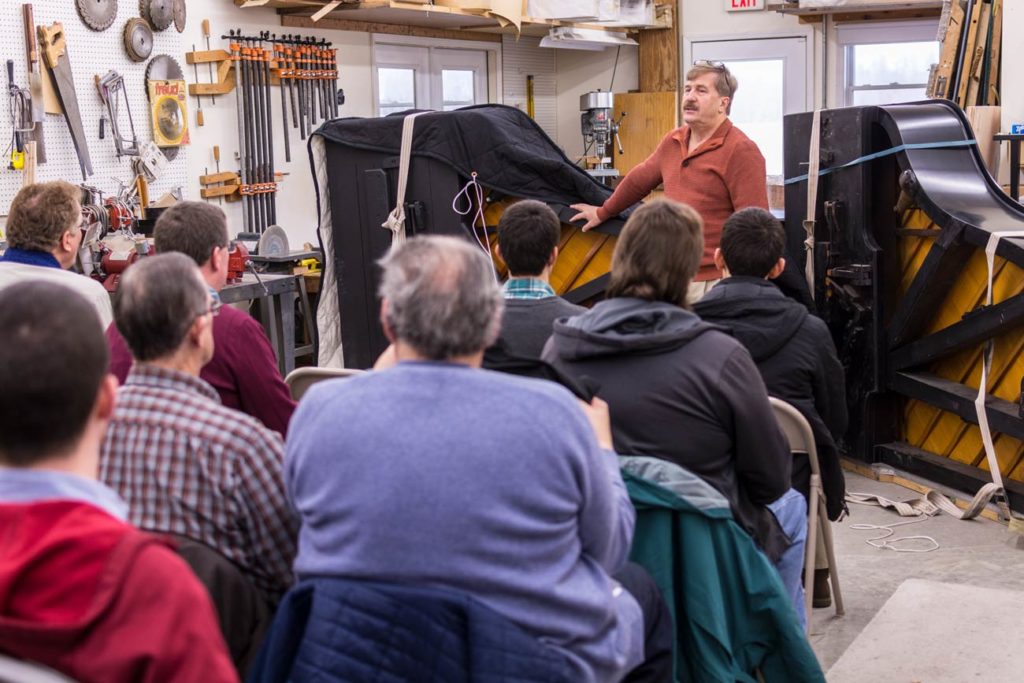
How Often Should I Have My Piano Tuned?
Maintaining Your Piano
As a piano owner, you naturally want your piano to sound and perform at a high level. A properly tuned piano is inviting to a pianist and helps bring out the best from any artist. One question we hear from piano owners is 'how often should I have my piano tuned?' This comes down to several factors. If your piano is new or freshly rebuilt or restrung, do not be surprised if you find that the piano slips out of tune fairly quickly. This is due to the new strings continuing to stretch and the piano acclimating to its new environment. This is a normal part of the 'settling' process. We tune our newly rebuilt pianos four-five times before they leave our shop to help ‘kickstart’ that process, but stretching and acclimating still occurs.There Ain’t No Such Thing As a Free Old Upright Piano (Most of the Time)
Why A ‘Free’ Upright Piano Is Not Always Free
“Free piano! Plays great! *just needs tuned. You move. Bring lots of friends, this thing is heavy...”Ads similar to this example, fill newspapers and local Craigslist listings all over the country. At first, this can sound like a deal of a lifetime. “A free vintage piano and all I need to do is pick it up and have tuned!” Unfortunately, these apparent deals can quickly turn into money pits that leave you with a lackluster, barely functioning instrument that cannot be improved without an inordinate amount of time and money. There are a few reasons that these pianos are often left in homes when they are sold and you can find free pianos abound on the internet. Below we will go over a the top reasons you should think twice before undertaking the inconvenience of acquiring a free/cheap piano.

